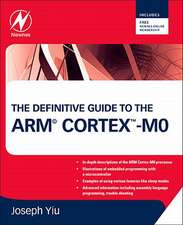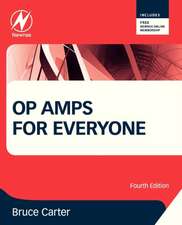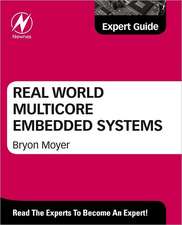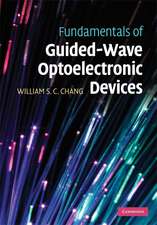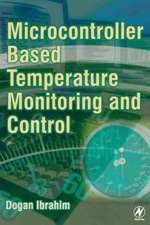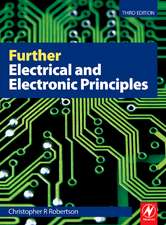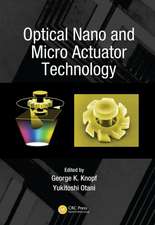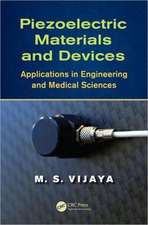Ion and Atomic Beams for Controlled Fusion and Technology
Autor M.D. Gabovich, N.V. Pleshivtsev, N.N. Semashkoen Limba Engleză Paperback – 30 apr 2012
Preț: 388.72 lei
Nou
Puncte Express: 583
Preț estimativ în valută:
74.40€ • 77.38$ • 62.35£
74.40€ • 77.38$ • 62.35£
Carte tipărită la comandă
Livrare economică 13-27 martie
Preluare comenzi: 021 569.72.76
Specificații
ISBN-13: 9781468484090
ISBN-10: 1468484095
Pagini: 244
Ilustrații: X, 242 p. 5 illus.
Dimensiuni: 178 x 254 x 13 mm
Greutate: 0.43 kg
Ediția:Softcover reprint of the original 1st ed. 1989
Editura: Springer Us
Colecția Springer
Locul publicării:New York, NY, United States
ISBN-10: 1468484095
Pagini: 244
Ilustrații: X, 242 p. 5 illus.
Dimensiuni: 178 x 254 x 13 mm
Greutate: 0.43 kg
Ediția:Softcover reprint of the original 1st ed. 1989
Editura: Springer Us
Colecția Springer
Locul publicării:New York, NY, United States
Public țintă
ResearchCuprins
1. Ion Sources, Plasma Emitters, and the Primary Formation of Ion Beams.- 1.1. Plasma ion sources and their major parameters.- 1.2. Plasma emitters of positive ions.- 1.3. Formation of ion beams. Plasma focusing.- 2. Focusing and Transport of Ion Beams.- 2.1. Propagation of nonrelativistic single-component charged-particle beams.- 2.2. Gas compensation of stable positive or negative ion beams.- 2.3. Spreading of compensated positive ion beams and its effect on focusing.- 2.4. The effect of the self-magnetic field of a compensated ion beam on beam transport.- 2.5. Synthesized beams.- 2.6. Collective processes in ion-beam plasmas and their effect on transport of compensated beams.- 2.7. Compensation of fluctuating ion beams and ion clusters (dynamic decompensation of ion beams).- 2.8. Plasma-optical lenses and transport of compensated ion beams.- 3. High-Current Ion Sources and Fast Atom Injectors for Thermonuclear Experiments.- 3.1. General information.- 3.2. Positive-ion-based injectors.- 3.3. Positive ion sources.- 3.4. Ion-optical system and neutralizer.- Charter 4. Mechanisms and Theory of Ion Sputtering of Metals.- 4.1. Ion sputtering and ion implantation in metals and the problem of improving the properties of metal surfaces.- 4.2. Rate of ion (cathode) sputtering.- 4.3. Dependence of the sputtering yield on the ion energy.- 4.4. The theory of sputtering by ion bombardment in the linear range of atomic collision cascades.- 4.5. Peak sputtering yields in the linear range of atomic collision cascades.- 4.6. Nonlinear effects in ion sputtering.- 4.7. Dependence of the sputtering yield on the angle of incidence of an ion at the target surface.- 4.8. Dependence of the sputtering yield on the ion dose and the residual oxygen and gas pressures.- 4.9. Dependence of sputtering yield on the cleavage plane of monocrystals and on the texture, roughness, and porosity of target surfaces.- 4.10. Sputtering yield dependence on target surface temperature.- 4.11. The parameters of the sputtering process and their effect on the sputtering yield.- 5. Ion Cleaning and Milling of Solid Surfaces.- 5.1. Advantages and features of ion-plasma technology.- 5.2. Ion decontamination of surfaces.- 5.3. Ion milling (etching).- 6. Ion Finishing and Exposure of Structure in Solid Surfaces.- 6.1. Ion grinding and polishing of metal and glass surfaces.- 6.2. Exposure of the surface structure of solids by ion bombardment.- 6.3. Topography and morphology of surfaces created by ion bombardment.- 7. Deposition of Films by Ion Sputtering.- 7.1. Thin film coatings and methods of producing them.- 7.2. Production of diamond and diamondlike films.- 7.3. Production of films of metals, alloys, oxides, borides, carbides, nitrides, silicides, sulfides, selenides, and tellurides by cathode sputtering.- 7.4. Ion sources for thin film sputter deposition.- 7.5. Comparison of films obtained by sputtering and other deposition techniques.- 7.6. Some applications of ion beams in thin film production.- 8. Ion Film Deposition and Plating of Surfaces.- 8.1. Optimum energy for ion deposition in films.- 8.2. Vapor condensation combined with ion bombardment (ion plating) of surfaces.- 8.3. Alternating ion—vapor film deposition.- 8.4. Vacuum—plasma film deposition (a method for condensation by ion bombardment).- 8.5. Production of textured tungsten layers in glow discharges.- 8.6. Film deposition by ionized clusters.- 8.7. A source of sputtered atoms for laser isotope separation (of uranium and other elements).- 9. Ion-Beam Welding, Microanalysis, and Micromachining of Solids with IonProbes.- 9.1. Ion-beam welding.- 9.2. Ion probes for microanalysis and micromachining of solids.- 9.3. Prospects for the use of submicron-sized ion beams.- References.


